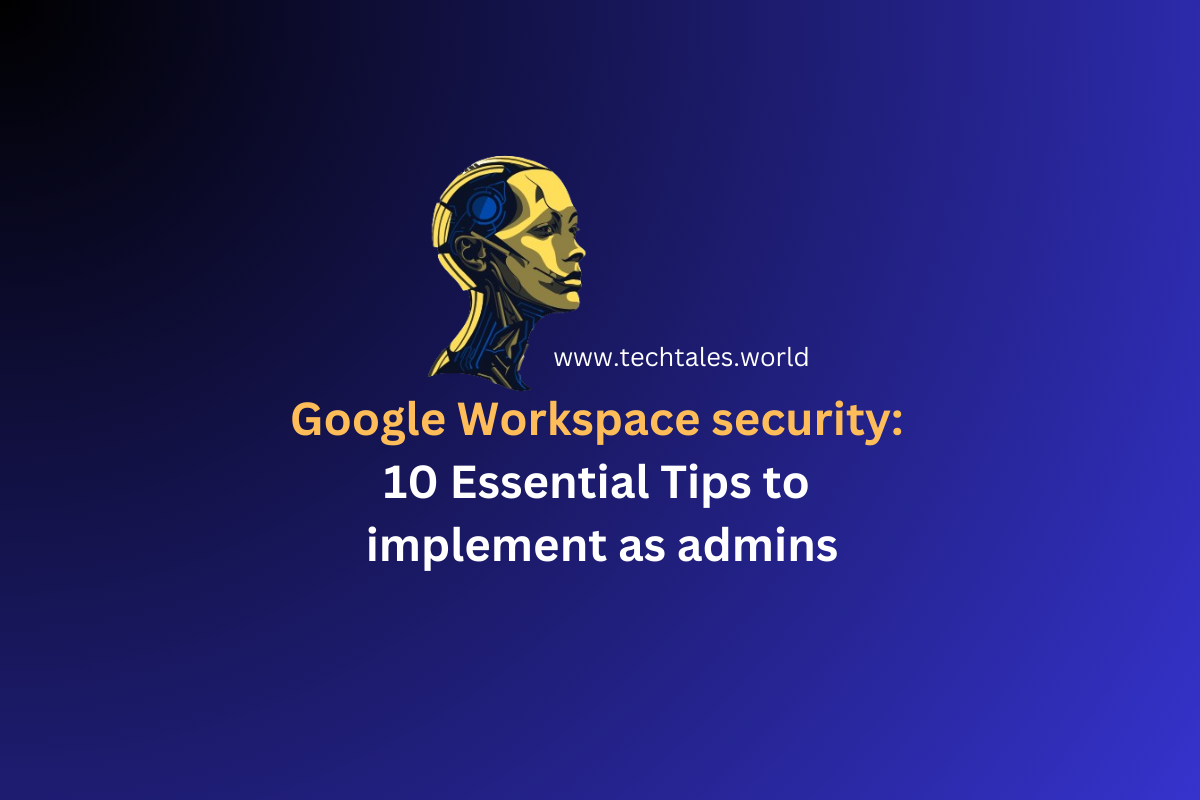How to Secure Business Data in Google Workspace: 10 Essential Tips
Google Workspace offers a powerful suite of productivity tools, but without proper security measures, sensitive business data can be at risk. To keep your data safe, follow these essential tips for enhancing your Google Workspace security.
Understanding the Importance of Google Workspace Security
Why Google Workspace Security Matters
Google Workspace houses some of your most sensitive business data, including documents, emails, client information, and other critical files. Securing this data is vital to prevent unauthorized access, data leaks, and potential compliance violations.
Common Risks Associated with Insecure Data
Failing to secure Google Workspace accounts can lead to phishing attacks, data breaches, and insider threats. Recognizing these risks allows you to prioritize the security measures your business needs.
Google Workspace Security Features You Should Know
Key Security Settings for Business Protection
Google Workspace offers robust security features that can help protect your data. These include customizable access controls, data loss prevention (DLP) policies, and advanced threat protection for phishing and malware.
How Google Protects Your Data Internally
Google continuously monitors for threats, encrypts data, and employs a dedicated team to secure its infrastructure. However, individual businesses need to use Google Workspace’s tools to ensure full security.
10 Essential Tips for Securing Your Business Data in Google Workspace
1. Enforce Strong Password Policies
- Why Strong Passwords are a Must
Hackers can easily gain access to a system through weak passwords. Implementing strong password policies adds an extra layer of protection.
- Steps to Implement Strong Password Requirements
Ensure passwords are long, complex, and include special characters. Consider requiring password updates periodically to maintain security.
2. Enable Two-Factor Authentication (2FA)
- Benefits of 2FA for Business Accounts
2FA adds an extra security layer, requiring users to verify their identity using a second device, making it much harder for attackers to breach accounts.
- How to Set Up 2FA in Google Workspace
Admins can enable 2FA for all users through the Google Admin Console. This simple step drastically increases account security.
3. Use Google Workspace’s Built-In Security Alerts
- Understanding Security Alerts
Google Workspace provides real-time alerts for suspicious activity, such as unusual login locations, ensuring admins can act promptly.
- Responding to Security Alerts Effectively
Regularly monitor alerts and have a response plan in place. Quickly addressing alerts can prevent potential security incidents.
4. Set Permissions and Access Controls Wisely
- Customizing Permissions for Users
Set user permissions according to their roles. For instance, only certain employees may need access to sensitive data.
- Monitoring and Auditing User Access
Regularly review permissions to ensure access remains appropriate and to spot any unauthorized attempts to access sensitive information.
5. Implement Data Loss Prevention (DLP) Policies
- What is DLP and Why it Matters
DLP policies help you prevent sensitive data from leaving your organization by restricting sharing, copying, or downloading of specific files.
- Setting Up DLP Rules in Google Workspace
Use Google Admin Console to create DLP rules that prevent unauthorized sharing of confidential information. This helps safeguard data from accidental exposure.
6. Regularly Audit Account Activity
- How to Track User Activity
The Admin Console allows you to monitor account activity, such as login times, IP addresses, and actions taken within Google Workspace.
- Spotting Suspicious Activity Patterns
Keep an eye on activity that doesn’t match usual patterns, like multiple failed logins, which could indicate unauthorized access attempts.
7. Limit Third-Party App Access
- Managing and Approving Trusted Apps
Restrict third-party app access by approving only apps you trust and need. Google Workspace allows admins to review and limit these connections.
- Risks of Overly Permissive App Access
Allowing too many apps can expose your data to additional vulnerabilities. Review and adjust app permissions regularly.
8. Use Advanced Protection for Admin Accounts
- Securing Admin Access More Tightly
Admin accounts have elevated permissions, so they should be secured more rigorously. Enable additional 2FA options and advanced security for admins.
- Configuring Advanced Admin Controls
Advanced settings let you monitor admin actions, ensuring they follow proper security protocols and don’t leave the business exposed.
9. Leverage Google Vault for Data Retention
- Benefits of Google Vault for Compliance
Google Vault helps you manage, retain, and search business data for regulatory compliance, litigation, or internal policies.
- Setting Up Data Retention Policies in Vault
Establish retention rules in Google Vault to ensure essential data is kept secure and available as needed.
10. Conduct Regular Security Training for Employees
- Importance of Employee Training in Security
Your employees are your first line of defense. Without regular training, they might unknowingly compromise security.
- Effective Training Tips for Cyber Awareness
Educate your team on recognizing phishing emails, managing passwords, and understanding their role in protecting company data.
Additional Google Workspace Security Best Practices
To further secure your Google Workspace, routinely update your security policies, use Google’s Security Center for in-depth reports, and consider adding endpoint management for mobile devices.
Conclusion: Protecting Your Business Data with Google Workspace
Securing your Google Workspace environment is essential for safeguarding business data. By implementing these 10 tips, you can ensure that your data remains safe from unauthorized access and other threats.
FAQs
What should I do if I suspect a data breach in Google Workspace?
Immediately check for unusual activity in the Admin Console and consider locking compromised accounts. Notify users of potential phishing attempts.
Can I use Google Workspace’s free version for business security?
While the free version has basic security features, upgrading to a paid plan provides advanced security options necessary for business use.
What is the recommended frequency for reviewing Google Workspace security settings?
Review settings at least quarterly or any time there are major Google updates to stay ahead of potential vulnerabilities.
What is Google Workspace Admin Console, and how does it help with security?
The Admin Console is a management dashboard where admins can control security settings, monitor activity, and manage user permissions.
How do I restrict access to sensitive files in Google Workspace?
Use Google Drive sharing settings to limit who can view, edit, or share specific files, and set up DLP policies to prevent unauthorized data transfers.
Read more, 10 Game-Changing Google Workspace Tools to Boost Team Collaboration
Discover the Power of Google Workspace: 10 Features Every Business Should Use
Learn more about the Google Workspace security checklist here, Security checklist for medium and large businesses (100+ users)


Leave a Reply